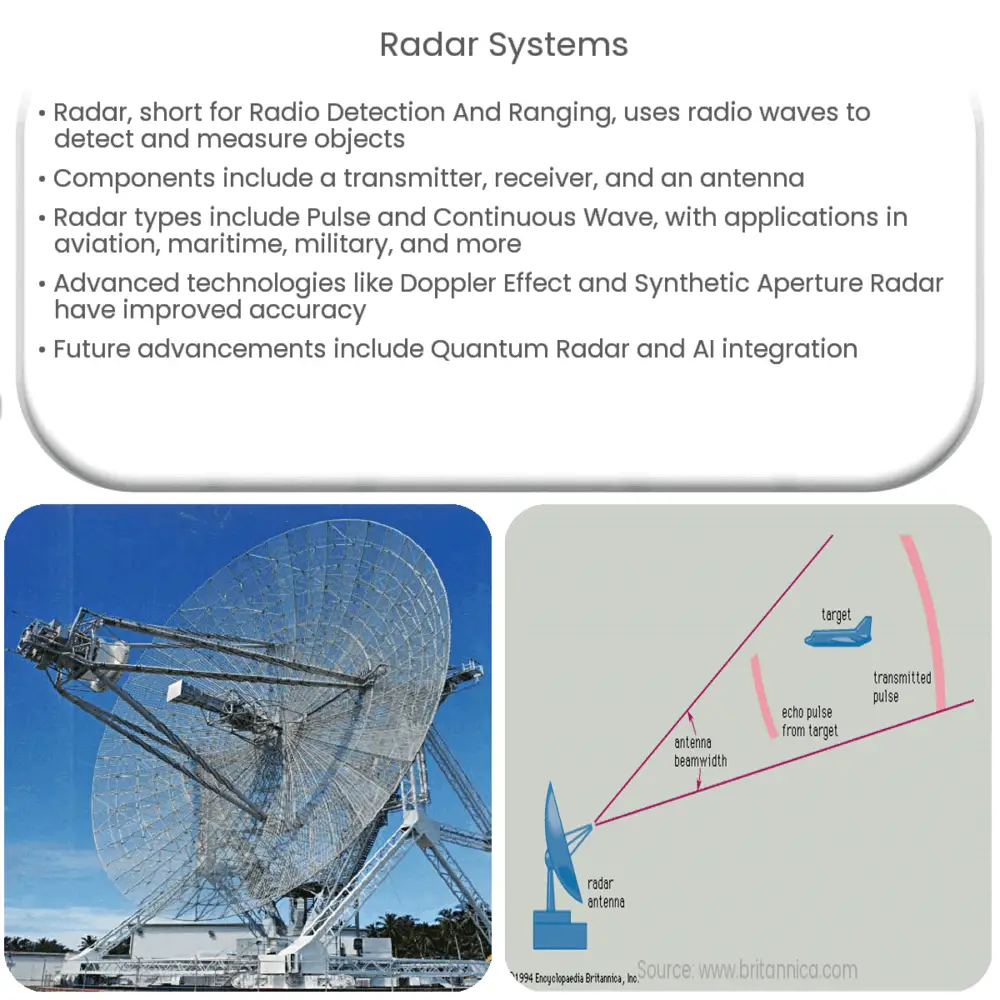Explore the essentials of radar systems, their operation, advanced technologies, and future prospects in this comprehensive guide.

Introduction to Radar Systems
Radar, an acronym for Radio Detection And Ranging, is a detection system that uses radio waves to determine the range, angle, or velocity of objects. The invention of radar systems significantly revolutionized various fields such as air and naval navigation, meteorology, and space science.
The Principle of Operation
The underlying principle of radar is quite simple yet effective. It works by radiating energy into space and then monitoring the echo or return signal reflected from an object (often referred to as the “target”). The basic components of a radar system include a transmitter, receiver, and an antenna.
Components of Radar Systems
Types of Radar Systems
Applications of Radar Systems
Radar systems have broad applications across different domains, largely due to their ability to detect and locate objects. In the aviation industry, radar is vital for air traffic control and navigation, while in maritime activities, it assists in the detection of ships and icebergs. Moreover, the military uses radar for multiple purposes such as surveillance, target tracking, and missile guidance.
In the second part of this article, we will delve deeper into the advanced technologies involved in radar systems, including Doppler Effect, Phased Array Radars, Synthetic Aperture Radars, and the future prospects of radar technology.
Advanced Technologies in Radar Systems
As the demand for high accuracy, high resolution, and real-time information has increased over the years, several advanced technologies have been integrated into radar systems.
Future Prospects of Radar Technology
The future of radar technology looks promising, with the continuous advancement in electronics and computing. Developments like Quantum Radar and Artificial Intelligence integration are on the horizon, which could potentially improve target detection and decision-making processes.
Conclusion
In conclusion, radar systems play a critical role in various sectors, from aviation to meteorology, military, and beyond. The technology operates on the simple premise of transmitting a signal and analyzing its reflection, but its various adaptations and advancements have made it an indispensable tool in our modern world. As technology evolves, we can expect further enhancements and capabilities in radar systems, contributing to the growth and efficiency of many industries and sectors.
Radar technology demonstrates how fundamental principles of physics, when integrated with advanced technology, can significantly enhance our ability to perceive and interact with the world. Despite the challenges and complexities associated with developing and upgrading radar systems, their significant societal and economic impact makes them an ever-evolving field of interest and study.

